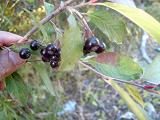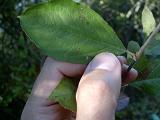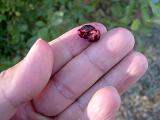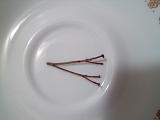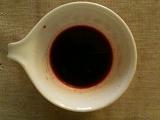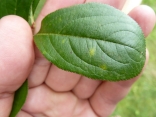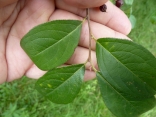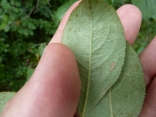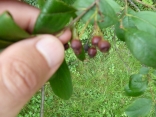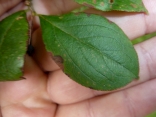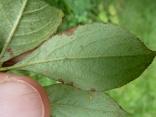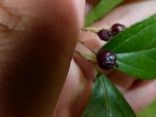One very distinctive identifying feature of the Chokeberry leaves is that they have tiny black hairs on the midrib (middle vein) of the upper leaf surface. If you click on and expand the picture on the right (you may have to click a second time to expand it further), you will see tiny black hairs on the midrib.
The leaves of Chokeberry are alternate. Notice also that the teeth on the leaves are very small and rounded (crenate). The leaf is smaller at the bottom and wider at the top. The top of the leaf has a short, pointy tip. The veins start out pinnately at the middle vein (perpendicular to the middle vein), but then turn upwards and run parallel to each other and the middle vein (arcuate). The flowers (not shown) are white with four petals.
Some botanists believe that Purple Chokeberry is a cross between the Black Chokeberry and the Red Chokeberry. Red Chokeberry has signficant matted hairs on the backs of the leaves and the flower stems. Black Chokeberry has hairless backs of the leaves and flower stems. The Purple Chokeberry has some hairs on the backs of the leaves and a thin gray or white mat of hairs on the flower stem.
Chokeberry is a fruit that can be used to make a pressed juice. The pulp is bitter so it is best to mash the fruit with Spring water and then press through a bag such as a jelly bag. The juice can be used to make jelly.
